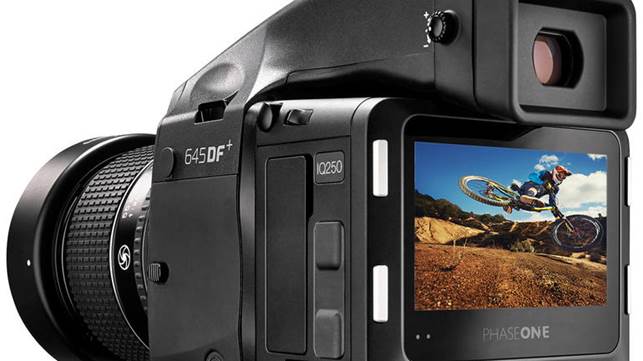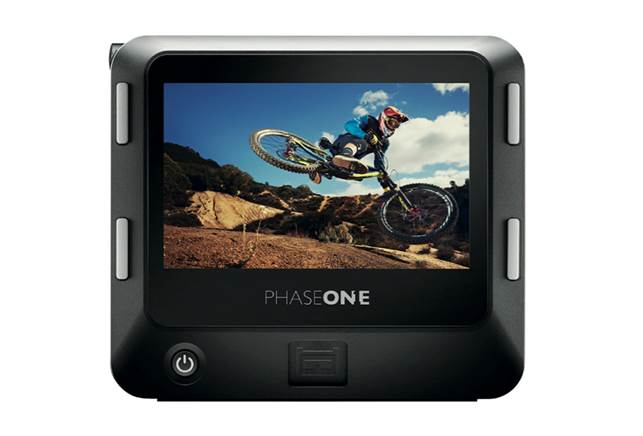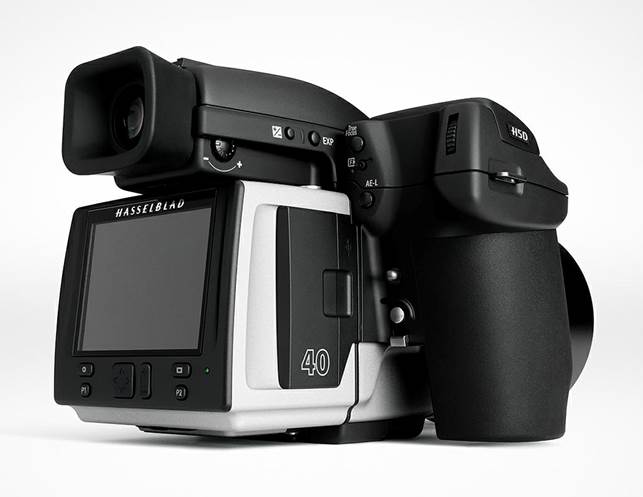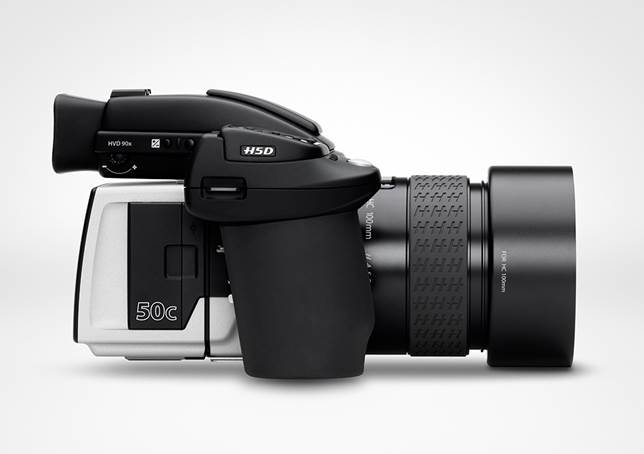A new crop of medium-format sensors arrives this spring
In the film era, medium-format photography was considered
35mm’s clumsy cousin, trading a bulkier camera and slower operation for substantial
gains in image quality.
That calculus has persisted into the digital age, but the
reasons are more complicated now. Back at the turn of the millennium, Canon’s
EOS D30 digital SLR was first to swap out the trusty, archetypal CCD—the
charge-coupled device that had served to capture images since the first video
camcorders— for a CMOS image sensor. (That stands for “complementary
metal-oxide semiconductor,” if you care). Almost all digital cameras with image
sensors 35mm-sized or smaller have since followed suit, and for good reason.
The gains of CMOS’s very different image-capture technology are considerable.

Phase One IQ250
Medium-format cameras, by contrast, have clung to their
clumsy CCDs—until late January, when out came the first medium-format digital
back to incorporate a CMOS image sensor, the phase One iQ250. Hasselblad tried
to claim the race with a promissory note for the Hasselblad H5D-50c, which
should be available by the time you read this; Ricoh isn’t far behind with its
Pentax 645D 2014. (The year is part of the name, at least for now.) The Phase
One and Hasselblad reportedly use the same 50-megapixel Sony-built chip; specs
on the Pentax were yet to come as of this writing.

Phase One IQ250 back.
That it took so long for CMOS to make its way into medium
format seems inexplicable. While CMOS sensors were once inferior to CCDs in
their image quality—which made them a nonstarter for quality-driven medium
format—this hasn’t been the case for years. CMOS chips are also much less power
hungry than CCDs. They allow images to be captured more quickly and in rapid
succession, which in turn produces smooth video. But the game-changing thing
about CMOS sensors in medium-format cameras, at least for photographers working
outside the studio, is that they are more efficient than CCDs at their main
assignment, gathering light. More about this in a minute.

Hasselblad H5D-50c
One other benefit, of no small consequence to manufacturers,
is that CMOS chips are cheaper to make—if you make them fairly small. There’s
the rub. Cutting up a silicon wafer in pieces big enough for medium-format
chips is a dicey business. And a few bad pixels can ruin an image sensor that
is much larger and thus more expensive to manufacture than a 35mm-sized, or
smaller, sensor. You have to throw more of them away. Given that sales of
medium-format cameras are orders of magnitude less than those of more compact
cameras, the economies of scale that apply to smaller sensors—whether in a
cellphone or a digital SLR—simply don’t come into play.
Indeed, while CMOS sensors are cheaper to manufacture, it
seems this won’t make an immediate difference in the breathtaking prices of
medium-format digital. The new Phase One costs $35,000, nearly 12 times the
price of the full-frame Nikon D800, which at 36MP has only a third fewer
pixels. That doesn’t even include the $5,000 or $6,000 for a medium-format
camera body. The Hasselblad H5D-50c is almost as pricey. (We can hope that the
Pentax will be less expensive given that the current 40MP Pentax 645D now costs
a paltry $7,000.) And whether for cost-saving reasons or manufacturing
constraints, that price buys you a physically smaller sensor than traditional
medium format: The Phase One IQ250’s CMOS chip measures 33x44 millimeters, as
opposed to the 40x54mm CCDs of previous Phase Ones. This “sensor crop” causes
an effective increase in focal length, just as it does with the APS-sized chips
used in 35mm-style DSLRs. In the IQ250’s case, the focal length multiplier is
1.3X.

Hasselblad H5D-50c
Forgetting those prices for a moment— and hoping that
Moore’s Law drives them down in a hurry—in what ways does a CMOS sensor really
benefit medium-format photographers? For one thing, it handles more tasks than
a CCD. A CMOS chip converts the analog electrical information that comprises a
photograph into digital form (A-to-D) before that data even leaves the chip,
while a CCD must send analog information to a separate processor for
conversion. And, unlike a CCD, a CMOS image sensor makes initial autofocus
calculations onboard. When it does send data elsewhere, a CMOS chip has more
pathways along which to dispatch electrons. These abilities allow a CMOS chip
to speed up the camera, affording a faster framing rate and nimbler autofocus,
much-needed improvements with still-sluggish medium-format digital. (CMOS,
along with ever-faster image-processing engines, has endowed smaller cameras
with flashy features such as “sweep” panorama and in-camera HDR.)
In the Phase One IQ250, the CMOS chip doubles shooting
speed, though at 2 frames per second rather than the previous 1 fps or less,
photographers probably won’t be shooting sports anytime soon with medium-format
digital.
They will, however, be able to capture images in much lower
light levels without as much annoying image noise. While current CCD-based
medium-format digital cameras give iffy results even at their modest top
sensitivity of iSO 800, the new CMOS models promise
pleasing mage quality at that speed and very acceptable quality at their top iSO of 6400. Photographers will be able to handhold a
medium-format camera where none has gone before—capturing unblurred
available-light candids that weren’t possible with
CCD models. What’s more, CMOS delivers better image quality at longer shutter
speeds, so it should open up new possibilities with tripod-mounted photography
as well. If the idea of finally putting CMOS sensors into medium-format digital
cameras is to make them a viable alternative to high-resolution DSLRs, we’re
not there yet. The first of these models, even if they deliver the expected
image quality in lower light, are still likely to be too sluggish for
photographers accustomed to 35mm-style DSLRs. Just as significant, they’re
simply too expensive for all but the most well-endowed shooters (and those who
rent or lease their gear for commercial work). Yet as anyone who has watched
digital technology race through the photographic world should know by now,
those hurdles may yet be cleared.